Voyager 1
NASA/JPL, Public domain, via Wikimedia Commons
Ask a Rocket Scientist
by Rob Webb on April 27, 2023Name: Elijah
Grade: 4
What is your favorite planet or star? My favorite star is Sirius
What is your favorite rocket? Falcon 9
Question: Where is the Voyager 1 spacecraft that launched in 1977 now and what cool data has it sent us about space?
Hi, Elijah, thanks for your question! I also really like Sirius! As the brightest star in the night sky (technically a binary star1), created by our almighty God on day four of creation week, it’s one of my all-time favorites.
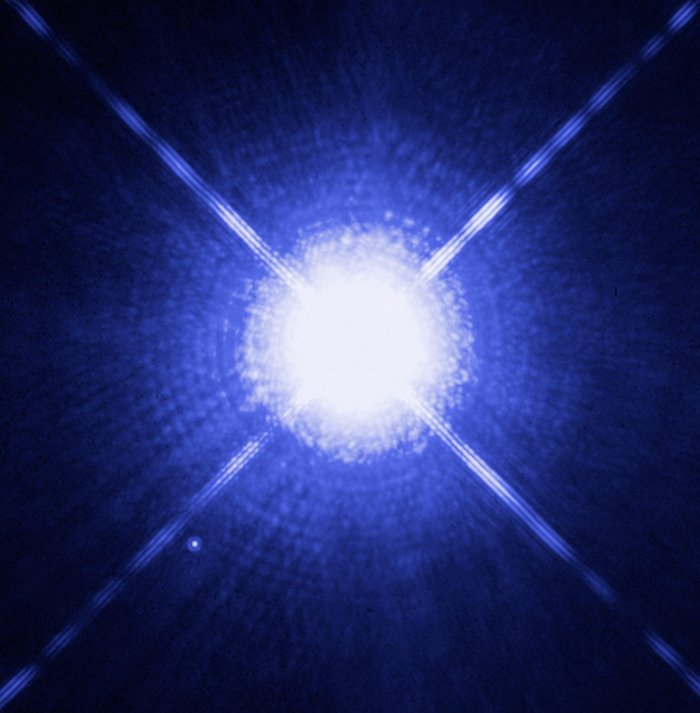
Hubble Space Telescope image of Sirius A and Sirius B (the white dwarf can be seen in the lower left). Image credit: NASA
I also think the Falcon 9 is a really cool rocket. It’s a powerful two-stage (and reusable!) launch vehicle, produced by the aerospace company SpaceX, that can launch astronauts and all sorts of things into orbit. In fact, it’s powerful enough to launch not only big satellites but also tons of essential cargo supplies (like food, water, science equipment, etc.) for the astronauts on the International Space Station!
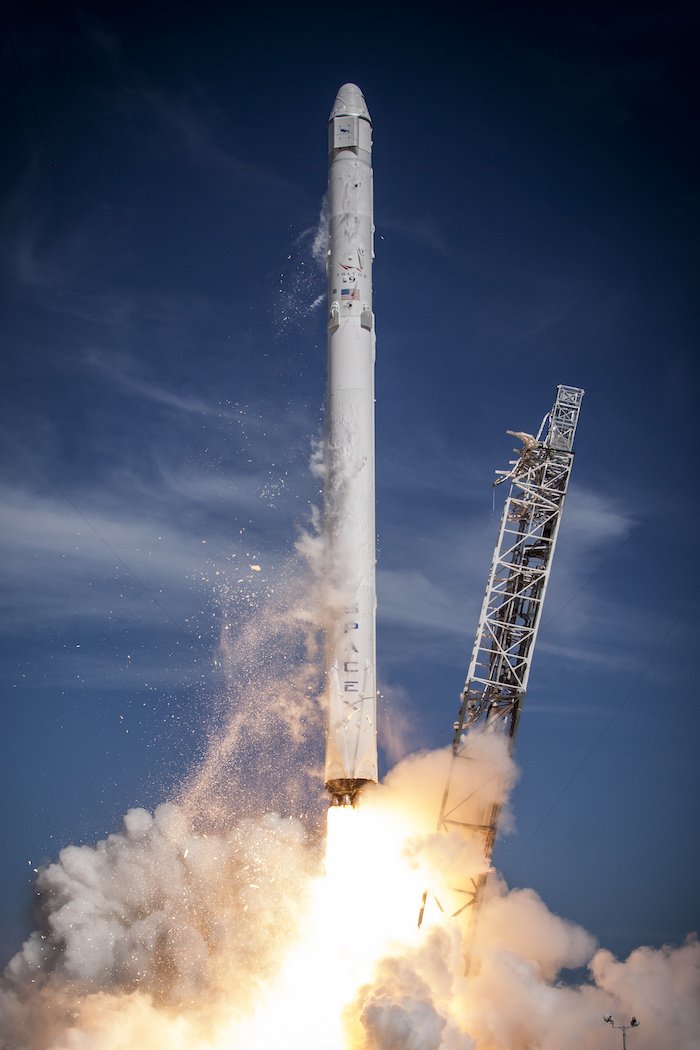
Launch of the Falcon 9 v1.1 rocket (from January 2015). SpaceX, CC0, via Wikimedia Commons
Now to your question, where is the Voyager 1 spacecraft that launched in 1977 now and what cool data has it sent us about space?
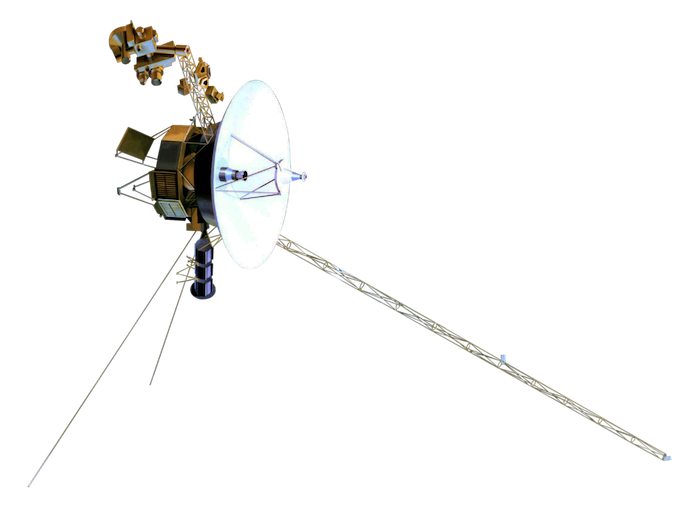
Model of the Voyager spacecraft design. National Aeronautics and Space Administration (NASA), Public domain, via Wikimedia Commons
Voyager 1 is definitely a pretty cool spacecraft, mainly because it (along with its companion Voyager 2) has been flying longer than any other spacecraft in history! Launched back in 1977, it successfully made flybys of Jupiter (in 1979) and Saturn (in 1980).2 In 2012, Voyager 1 became the first spacecraft to venture into “interstellar space” (the area between the stars) and continues to collect data as it travels further into the universe—billions of miles away from the sun!
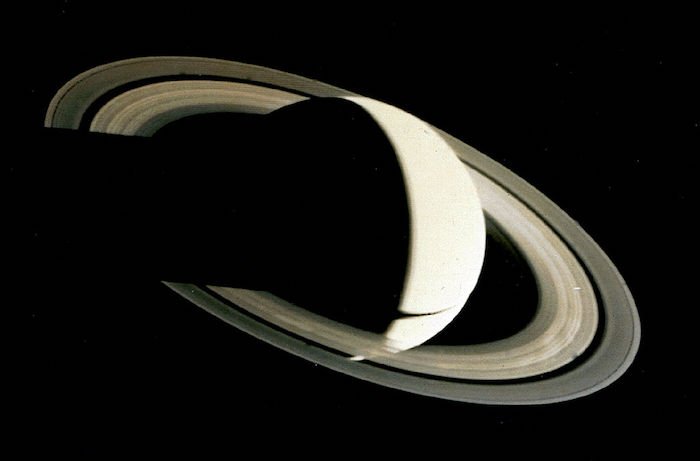
Image of Saturn from Voyager 1. NASA, Public domain, via Wikimedia Commons
Today, Voyager 1 amazingly is still communicating with us through NASA’s Deep Space Network,3 receiving commands and transmitting data back to the earth.4 And that data is helping scientists to know more about the nature of energy and radiation in space (which is important for protecting future astronauts!) and to understand the edges of the heliosphere.5
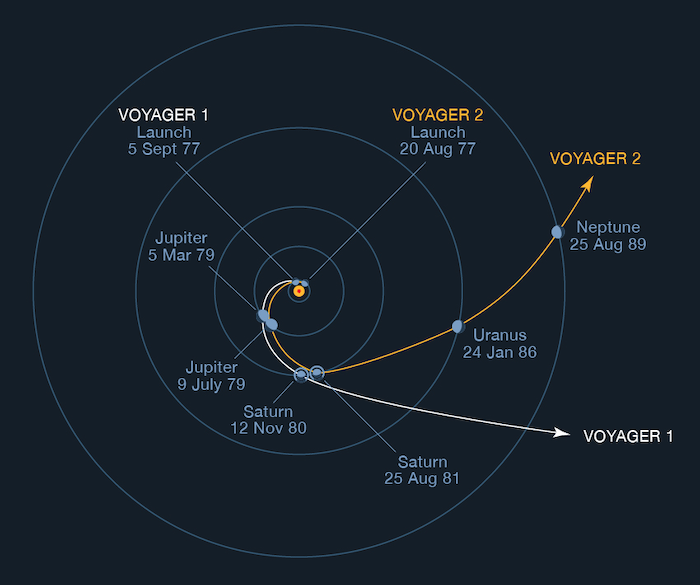
Illustration of the Voyager 1 and 2 trajectories. Image credit: NASA/JPL-Caltech
A few of Voyager’s major discoveries include finding a thin ring around Jupiter, two new Jovian moons (Thebe and Metis), and five new moons at Saturn.6 Voyager also took many really cool photos that reveal a lot of amazing details of the moons around Jupiter and Saturn. For instance, images of the moon Io showed active volcanoes spewing material into space!
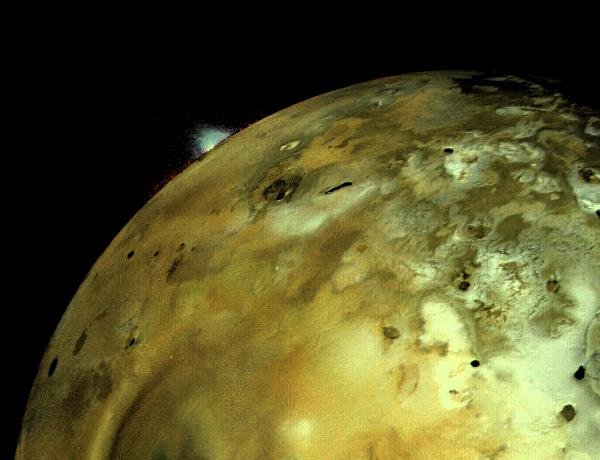
Image of volcanic explosion on Io from Voyager 1. Image credit: NASA/JPL
And on top of all that, in 1990, Voyager’s cameras were pointed backward and captured images of the sun and planets (the first ever “portrait” of our solar system) that arguably became some of the most famous photos of the last century for astronomy. This series of images became commonly known as the “Solar System Family Portrait.”7 This image series also contains the famous “Pale Blue Dot” image, showing the earth as a tiny “dot” within a scattered ray of sunlight. After snapping these photos, Voyager 1 then powered off its cameras forever (to save energy for its long journey ahead).

The “Solar System Family Portrait,” the final series of 60 images captured by Voyager 1, with enlarged views of the six planets. Image credit: NASA/JPL-Caltech
No doubt, these images give us a great “outside looking in” view of our world and our planetary neighbors in the solar system. But looking at these images, where each planet is shown as just a speck of light in the vastness of space, should ultimately make us stop and marvel at the greatness of our God. Our little “blue dot” planet is orbiting around just one star that exists in a universe that’s full of a countless number of stars and galaxies. In fact, one estimate says there’s (at least) 200 billion trillion stars in the universe.8 That’s 200,000,000,000,000,000,000,000. That’s a lot of zeros!
And from the Bible, we read that our powerful God created and named each one of them.
He determines the number of the stars; he gives to all of them their names. Great is our Lord, and abundant in power; his understanding is beyond measure. (Psalm 147:4–5)
And we also read,
When I look at your heavens, the work of your fingers, the moon and the stars, which you have set in place, what is man that you are mindful of him, and the son of man that you care for him? (Psalm 8:3–4)
So, the same God—who created the countless stars by his awesome power—cares for us (on this tiny planet called earth!) and provides salvation for us so we can be reconciled to him for eternity—by the finished work of Jesus Christ!
But God shows his love for us in that while we were still sinners, Christ died for us. (Romans 5:8)
Ask Your Question
Ask a parent to help you submit your space-related question to Rob Webb today! Don't forget to check back next week to see if your question was chosen!
Footnotes
- It consists of a main-sequence star, called Sirius A, and a faint white dwarf star, called Sirius B.
- Because Voyager 1 also did a flyby of Saturn’s moon Titan, it was not able to do flybys of Uranus and Neptune. However, its companion ship (Voyager 2) by design was able to do flybys of all four of the outer planets: Jupiter, Saturn, Uranus, and Neptune.
- This network consists of three (huge!) antenna facilities that are equally spaced around the world (about 120 degrees longitude apart) located in California, Spain, and Australia.
- Side note: My (really smart) grandpa actually helped design this communications system for the Voyager 1 and 2 spacecraft! And, in fact, he’s one of my main influences for joining the rocket science industry in the first place!
- This is the sun’s magnetic “bubble” surrounding the solar system. At the edge of this bubble is the point where the sun’s influence and solar wind (flow of charged particles from the sun) is basically stopped.
- With a parent’s help, you can read more about all its cool discoveries here: https://solarsystem.nasa.gov/missions/voyager-1/in-depth.
- Mercury and Mars are missing from this image series, simply because Mercury was too close to the sun to be seen and Mars was on the same side of the sun as Voyager 1.
- This is from taking the number of stars in a typical galaxy (100 billion), using our galaxy (the Milky Way) as the model, multiplied by the number of estimated galaxies in the universe (2 trillion) to get the answer of 200 billion trillion stars—a number so big that none of us can even wrap our heads around!
- © 2024 Answers in Genesis
- Privacy Policy
- Contact
- About
